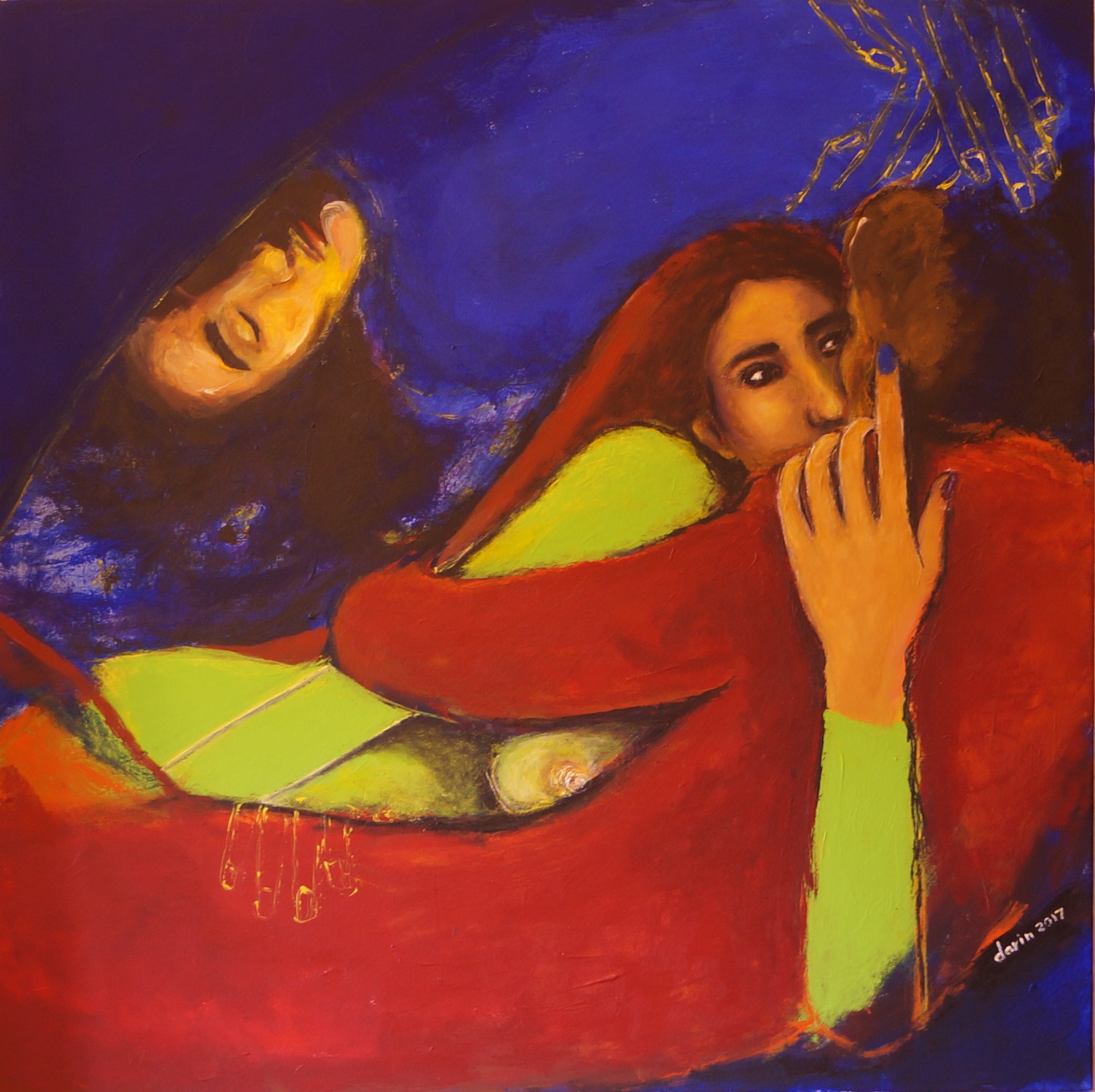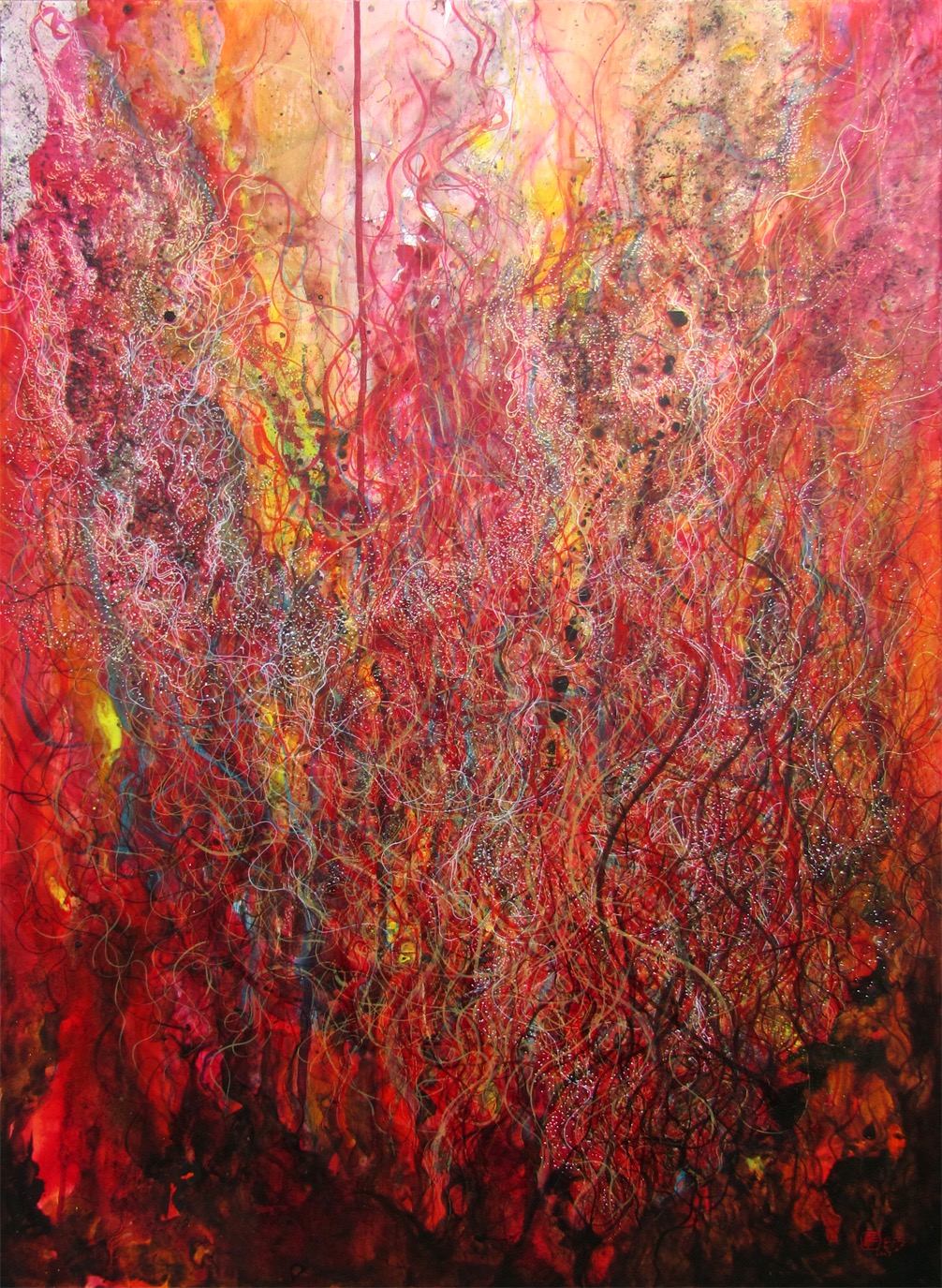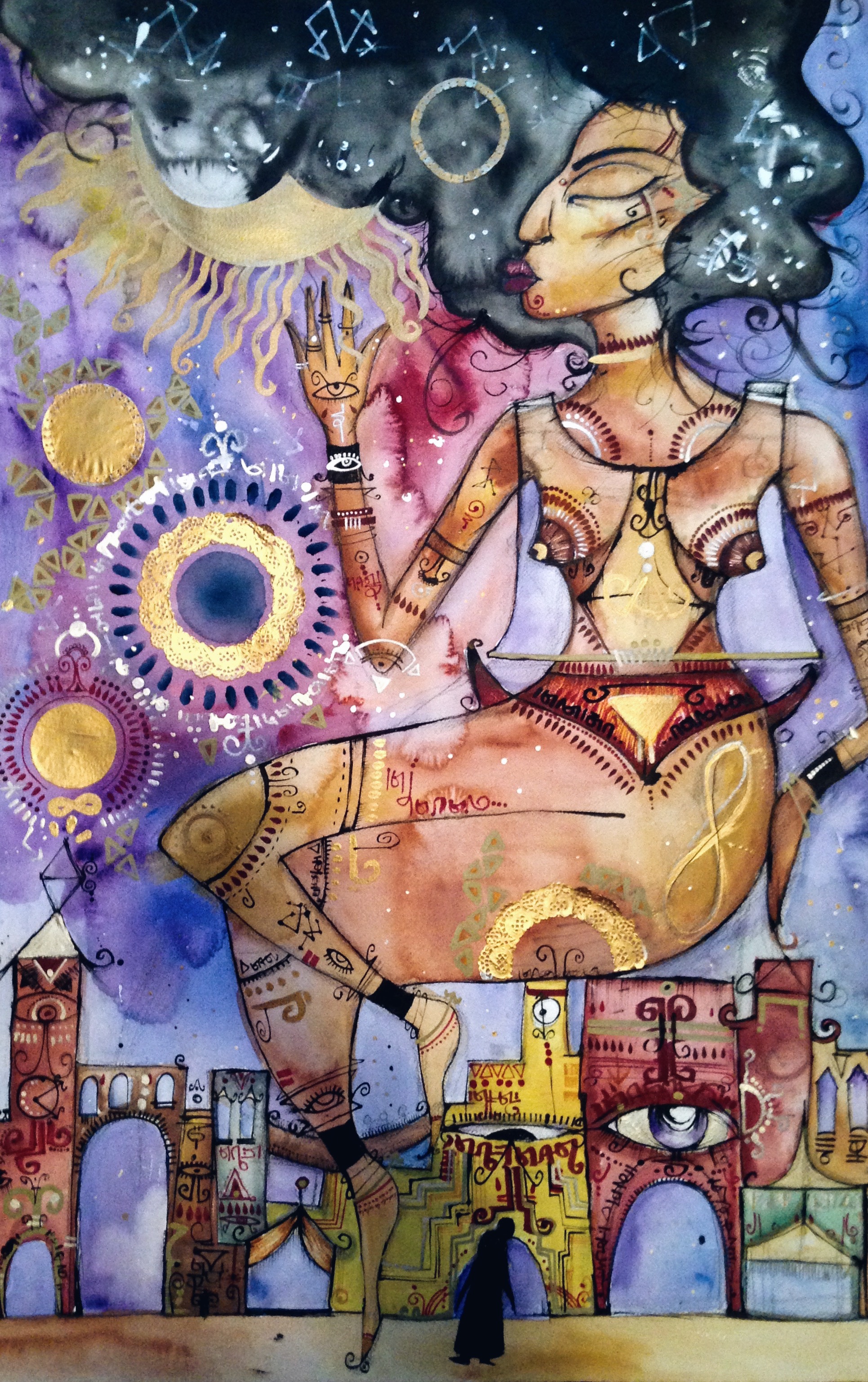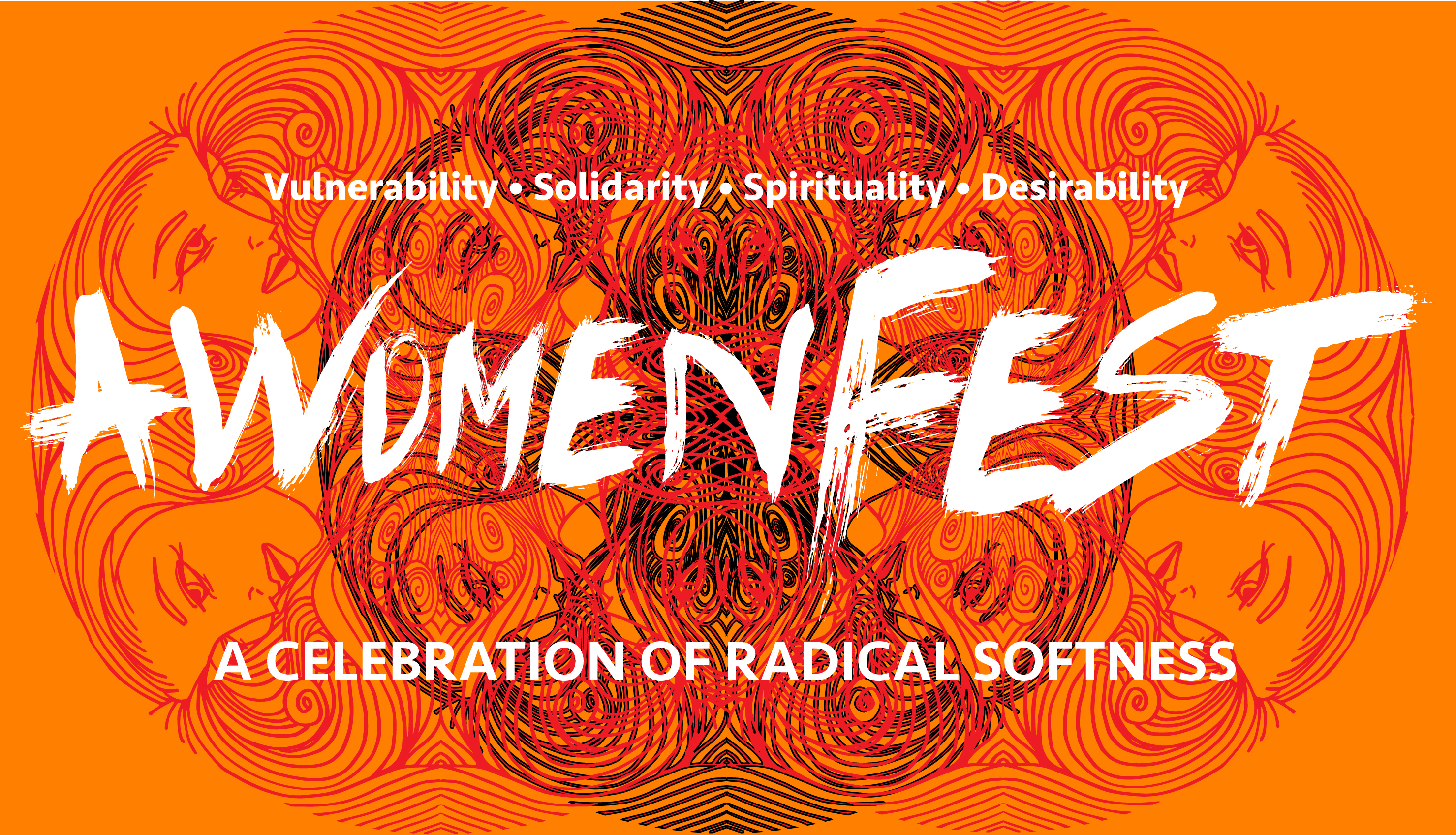
‘Radical Love: Female Lust’: turning historic Arabic poetry into contemporary art
Olamiju Fajemisin
27 Feb 2017
Radical Love: Female Lust will be a moving show. It’ll be on at The Crypt Gallery between the 14th of February and the 5th of March. The exhibition consists of responses by female artists from all over the world to historic (pre-Islamic to 12th century Andalucían) Arabic poetry by female poets. I had the pleasure speaking to some of the artists involved, and sitting down with the show’s curator Róisín O’Loughlin to discuss the themes of sex, confidence, feminism and vulnerability.
Róisín told me that the poetry is all very moving. One poem in particular by Wallada bint al Mustakfi, written in 11th Century Cordoba, Spain, almost serves as the show’s leitmotif.
I am made for higher goals and by Allah
I am going my way with pride.
I allow my lover to touch my cheek
And bestow my kiss on him who craves it
Upon reading the poem, she told me that what struck her the most was Wallada’s sense of empowerment. “The word ‘empowerment’ has just been manipulated to sell things nowadays. A point has been reached where it has become meaningless, but some of these poems are so forthright that even if a celebrity was to say the very same things nowadays, people would find it thrilling and dynamic.” One of the exhibition’s aims is to recreate this original sense of empowerment through multiple artistic mediums. Róisín went on to say, “they’re alive in themselves. The poets are so direct”. Direct and unabashed are the only umbrella terms appropriate to describe these poems. As we sat down poring over the words and art, our opinion was only reinforced; the images and text combined exemplified Róisín’s ideas of empowerment without commercialism.
When I asked Róisín if she thought there was something explicitly feminine about these poems she replies “yes, unabashedly so”. In the writing, we see a tenderness, sensitivity, and a softer passion, as well as the specific boldness that’s conveyed in the more overtly sexual pieces. Either way, both approaches exude femininity. Contributing artist Takwa Barnosa also drew upon this in her response. “I kept rewriting and reading it [the poem] for days, and each day I felt more connected to it…I put the emotions away and started counting on the technique and colours, I chose grey and gold because I believe it’s very feminine. That’s why it has this luxury theme.”
Conversation turned to the timelessness of the prose. “These women were the precursors of writing with a personal voice” Róisín expresses. “What’s truly meaningful to me is the resistance these women exhibit when they’re rejecting suitors for example and how strong they are whilst doing this, although strong doesn’t seem fair enough a word to describe the poets. They’re simply brilliantly unashamed”. Artist Bettina Fung also says that we’re “consuming” the poet, Umm Addahak al-Murharibiyya in the poem Rider. She explains, “Umm is from pre 6th century and there is something quite warm about how this feeling is universal and exists throughout time that it is inherently human.”
Many of the poems generally consist of “women talking freely about their sexuality and vitality” in a way that, Róisín says, seems to have only recently come back into vogue. It’s exciting to have evidence of women speaking like this for millennia, “they exude self worth” she states. The timelessness of their sexuality was also touched upon in Farah Soobhan’s response. “It’s empowering to see women from back then courageous enough to voice their emotions and live out their dreams and desires” she says. These poems are evidence of strong female voices that refused to be silenced, their strength is validated in that fact that, as Róisín says, “their words were valuable enough to be recorded and passed on”, and that they’re still being appreciated and published today. Farah continues, “it made me think quite deeply about what it means to be a woman now in this day and age and what it meant back then in the Middle Ages.”
The more we filtered through the poems the more it became apparent to me that these are stellar representations of what Róisín aptly describes as “mutual, female sexual nature in the face of political and cultural adversity”. Besides differences in syntax due to the fact the poems are translated from the original Arabic, the thoughts and emotions conveyed are the same as those in today’s Western society albeit phrased differently. The poets to whom the artists responded were able to be themselves in their words completely. Their expressions often superseded their position in their environments. “There wasn’t a parallel for this in western society at the time, these poems were written by the daughters of caliphs, they were concubines, princesses, slaves, singers and wits – all of whom manage to unapologetically encapsulate raw, carnal female sexuality and vitality despite the circumstances” Róisín says. These poems spoke a wealth of emotion and power in just a few lines.
There have been many instances throughout the course of history where women celebrate themselves and their beauty. In more recent times this can be seen all over social media on hash tags such as #blackoutday and #praisintheasian. On these platforms people amass broad recognition from unapologetically revelling in their beauty. This confidence is also something artist Gabrielle Tesfaye drew upon, she noted that in a poem by Shamsa Al-Mawsiliyy, “it’s almost as if this woman she writes about is the controller of the universe she exists in, and is her voice that makes the planets orbit, the sun rise and the moon illuminate. She is the one who tells time how to move, in occurrence to her ways. Not in a controlling or demeaning way, but in an ever so graceful, and divinely powerful manner.”
All of these emotions are clearly reflected in the sculptures, paintings, stained glass, calligraphy, photography and illustrations that will be at the show. The artists have effortlessly encapsulated a thousand year old passion.
Catch Radical Love: Female Lust at the Crypt Gallery in Euston, London from the 14th of February until the 6th of March.








